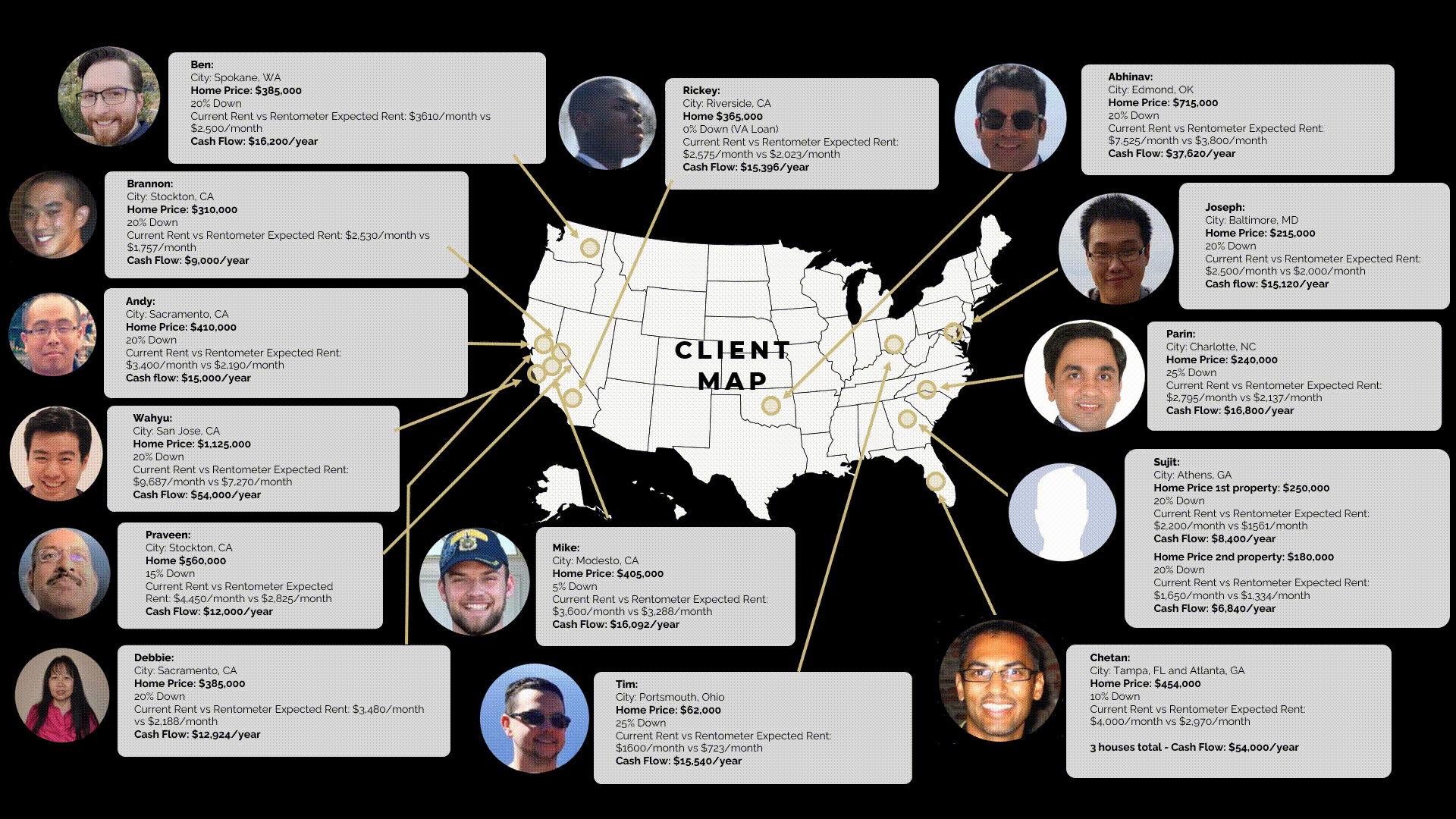What kind of student housing investment returns can you expect in 2023?
You’ve come to the right place.
Student rentals are generally a good investment opportunity, even in downturns, so choosing this niche market is a valid option if you’re interested in becoming a real estate investor this year.
Ready to learn more? Let’s get started.
What is a student housing investment?
As you probably can guess from the name, this type of real estate investment caters to students who need affordable housing near their community college or university.
Many educational institutions don’t offer student accommodations at all (or just don’t offer enough to meet the demand). Which leads to a lot of opportunities in this niche.
How do I know?
Because I actually built my own multiple six-figure rental property portfolio with student renters in mind. Just like I explain here:
But let’s answer the question you came here for: What kind of returns can you expect? That’s what we’ll look at next.
Student housing investment returns
First, let’s start with a few data points to give you an idea of what the student housing market looks like.
In 2022 versus 2021, student housing set a record-high transaction volume of $18.9 billion for the year. In contrast, the total in 2021 was significantly less – $11.5 billion.
Also, room and board costs have spiked by over 50% over the past 20 years, which has increased the demand for more affordable housing options nearby campus.
And it shows.
For example, as of early 2022, EquityMultiple reported that their student housing investments were bringing in average cash-on-cash returns of over 17%.
(Cash-on-cash return refers to the ratio of cash flow relative to the cash invested in a property. It can help you determine if a property is a sound investment or not.)
To put this into perspective, most investors agree that projected cash-on-cash returns of between 8-12% make a good investment. That’s why returns of over 17% are exceptional.
So, is the student housing outlook good? In a word, yes.
With rising rent prices and high occupancy across universities, the student housing market size is growing. In fact, it’s supposed to reach over 9 million beds by 2031.
As a real estate investor, I’ve capitalized on this trend to build income streams that have replaced the six-figure salary I make as a pharmacist (while working full-time). And so can you.
How? Let’s get into the details.
Ways to improve your returns
Is there a way to improve your chances of getting a high return on your investment?
Yes! By finding the right, strategic properties, planning ahead, and understanding what these tenants look for – and how to find them.
Here’s my process:
1. Research
Before buying a property, look on Zillow for houses that are similar square footage, number of bedrooms/bathrooms, and in the same or nearby neighborhood. Then, choose one that’s in good condition and on the lower end of the price range for the area. This ensures your investment has plenty of room to appreciate.
2. Compare rental listings
If you’re interested in renting by the room, which is what I do, look at Facebook housing groups, nearby apartments, and Craigslist to get an idea of what the going rate is and what you could reasonably charge. Then, using what’s called an amortization calculator, you can figure out how much your monthly mortgage payments would be based on your initial down payment.
3. Figure out taxes and insurance
How much will you have to pay in taxes for your rental property? You can find out by contacting your county tax assessor’s office. Most property taxes are between 1-2% of the property’s price. And for the insurance, get a quote from a homeowner’s insurance agency, or Google the typical insurance you can expect to pay based on the location you’re interested in.
4. Calculate your expenses
I typically budget 2% of a property’s value to cover expenses. So, if a property costs me $100K, my yearly expenses budget is at least $2k, which covers repairs, maintenance, and so on.
5. Find good tenants.
I use a method I call the PRIME method to find ideal tenants. Here’s what that means:
1) Placement of Ads
“P” stands for placement. I make sure I advertise on websites where high-quality tenants hang out.
2) Review
R stands for “Review.” I review potential tenants’ online presence to understand their lifestyle – so that I avoid students who party a lot. Someone who is an honor student or does a lot of community service will likely make a better tenant.
3) Identify the tenant
“I” stands for “identifying the type of tenant.” If they make a lot of unreasonable demands or are generally rude/unpleasant, you probably don’t want them at your property.
4) Measure responsiveness
“M” stands for measure responsiveness. In other words, does the tenant reply to messages quickly when asked for paperwork or other important information? Are they polite and respectful? These are good signs to look for.
5) Ensure proof of income
The last step is to ensure proof of income (E). Since I rent to students, I ask for a prospective tenant’s student loan or financial aid documents, or their parents’ FICO score or bank statements if they’re the co-signers.
I talk more about my system here:
Okay, now that you know the process for getting high returns, let’s take a look at an important calculation you should always make before investing.
Cash flow calculation
How can you determine if a property will give you the return and the cash flow that you want?
Use an online calculator like this one.
Realize first that cash flow is just one way to make money in real estate. There are also three other ways real estate builds your wealth. I talk more about them here:
Student investment ROI examples
Now, let’s take a look at some real ROI results that my students have gotten here. As you can see, there’s a big range of locations and home values and cash flows.
In other words?
You can make your student housing investment returns work for you based on your goals. So, whether you want to supplement your current income or quit your job entirely and invest full-time, you can find the right balance for you.
For instance:
Ben has $16,200 a year in cash flow on his house with monthly rents at $3,610.
Wahyudinata makes $54,000 cash flow per year on a house with a $9,687 monthly rent.
And here are a few other results:

Why is student housing a good investment?
Now you know what returns you can expect. But what else makes student accommodations a good investment opportunity?
Here’s why this is a very secure and profitable investment.
Scalable, mostly passive income stream
If you follow a proven process, you can grow your student housing investment returns over time and reap the financial benefits with minimal active work.
Plus, by renting individual rooms, you end up with higher profits per property compared to renting out a whole house or apartment to just one person or family.
For example, if I rented my properties as a whole, I’d earn about $1,500 per month in rent for each property. But since I rent by the room and charge $600-$700 per room, I end up earning $2,400-$3,500 per month instead – for the same property.
Stable investment opportunity
Historically, college enrollment rates tend to increase during economic downturns. For example, in the 2008 financial crisis, enrollment jumped by 6.5% in 2009 compared to the previous year – kids went back to school in part due to higher unemployment rates and less job security. Student housing tends to be a stable investment opportunity even in recessions.
Students only need basic housing
As long as the property you want to rent is clean and in good condition, updating the kitchen to luxury granite countertops or replacing the outdated linoleum flooring doesn’t have to be a priority.
Why? Because students are typically on a tight budget compared to working professionals; they care more about affordability than about having a perfectly-remodeled space.
On the other hand, students do value things like high-speed internet and a quiet place to study, so focus on accommodating these needs instead.
Next, let’s look at some downsides that come with this type of real estate investment.
What are the risks of investing in student housing?
As with any investment, student housing does come with risks. Here are a few.
1. Young tenants
College students sometimes lack the maturity and experience of older renters. For example, they might not know to do basic maintenance tasks, such as rolling out the trash on trash day or leaving a trickle of water running in the kitchen and bathrooms to avoid frozen pipes during the winter.
So, to avoid potentially expensive problems, I have a set of house rules that outline tenant responsibilities. Here, good communication is key.
2. Vacancy
What’s unique about student housing is that tenants often leave for several months at a time over the summer, which could mean dips in cash flow if you’re not careful. To avoid this, make sure your tenants sign a year-long lease.
Here’s what I do: My tenants rent for 12 months at a time, but they can sublet to summer students if they decide to leave town for a while. The majority of students don’t have trouble finding summer subletters. And I help them if they need it. This ensures that the rental properties aren’t vacant for several months every year.
And it keeps everyone happy.
3. Property damage
Yes, newer students are more likely to throw a party compared to more mature renters. This can be a downside if you rent to the wrong students.
So, how can you avoid these issues?
First, make sure your tenants sign a lease contract before they move in agreeing to no house parties or disturbing their neighbors. You should also have insurance, co-signers (in case they don’t pay rent), and a security deposit.
What I do is collect 1-1.5x month’s rent for security deposits, which adds up to $3,000 to $5,000 per rental. This gives me a good financial cushion to fix or replace anything that is damaged by the student tenants.
Second, pick your tenants wisely. For example, grad students earning a doctorate or professional degree who are laser-focused on getting an education will be much less likely to throw wild parties compared to other students, so keep this in mind when filtering potential renters.
Now that you’ve gotten an overview of what investing in student housing is like, let’s talk about how you can get started yourself.
Getting started as a student housing investor
If you think this unique way to invest in real estate is for you, here’s how to get your foot in the door.
What kinds of properties are best?
Though buying cheap, old houses that need a lot of work might be tempting, I don’t recommend it. Why? Because you can get a lot of unpleasant surprises.
For example, I bought an old house without doing enough research first and ended up having to pay tens of thousands of dollars to repair a plumbing issue and replace the HVAC system.
So, instead, look for large, relatively new houses. That way, you can convert any spare rooms into extra bedrooms to increase your profitability, which allows you to build your portfolio faster.
Want to get the breakdown of what I earn from an average single-family home? Check out this video:
Do your homework
As an investor, you should find out key info about a property before buying it. This includes estimating your ROI, overall costs, cash-on-cash return, and Cap rate.
How to find the right tenants
As I talked about above, the PRIME method is a great way to find high-quality tenants. And, if you’re trying to get tenants faster, you can charge a lot less than on-campus options.
This can also help you get the word out about your rental properties. Why? Because affordable housing can be hard to come by, and students often talk to their friends about their great living arrangements.
Locations to target
Where should you invest in student housing? Though there isn’t just one great answer, areas that attract high-income professionals (such as doctors, lawyers, engineers, etc.) are a great choice because higher paying jobs usually translates to increased housing demand.
Over to you!
There you have it! Now you know what kind of student housing investment returns you can expect in 2023.
By catering to students, you can have a significant ROI for years to come, which is why this is one of the best real estate niches to get into.
Don’t know where to start? I’ve got you covered. If you could use some help to avoid common mistakes and snag your first rental deal, check out my coaching services here.


